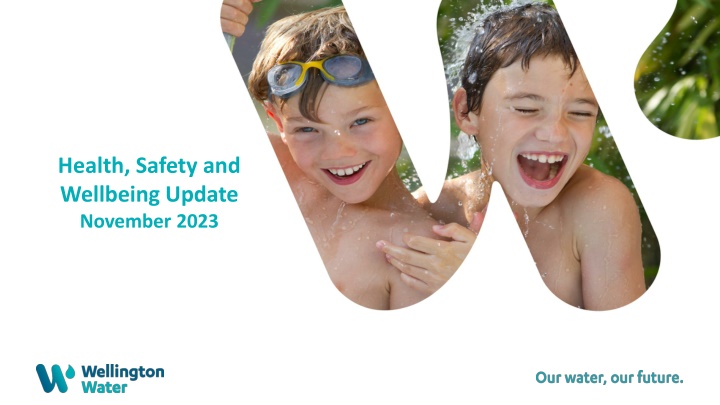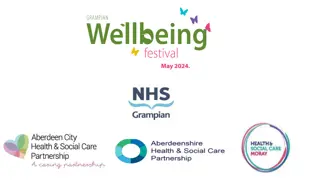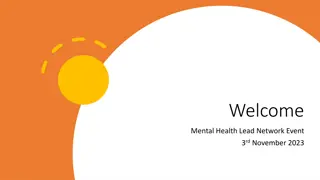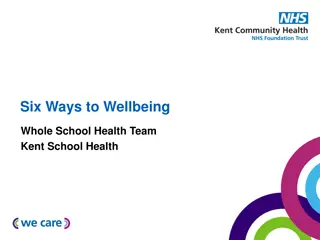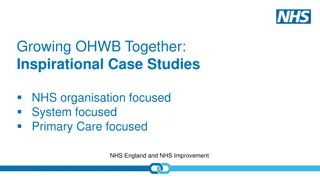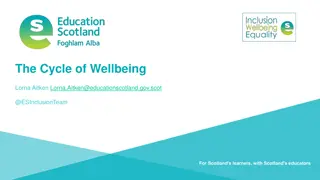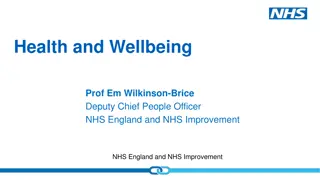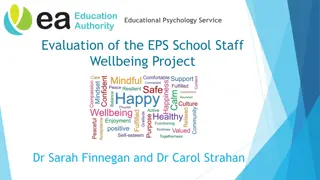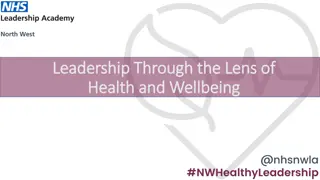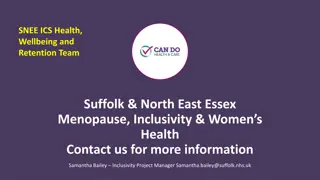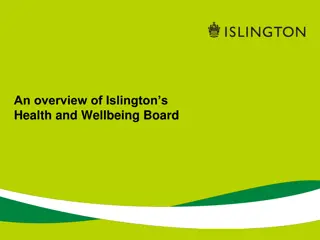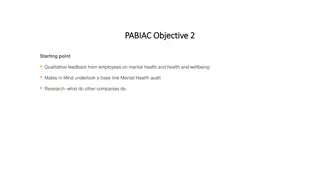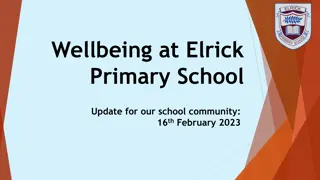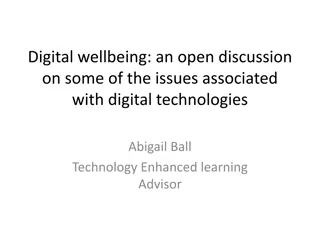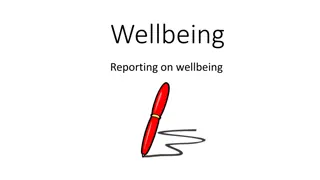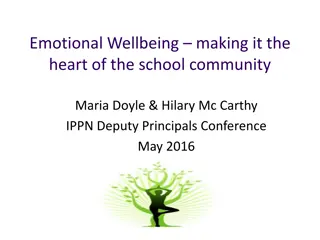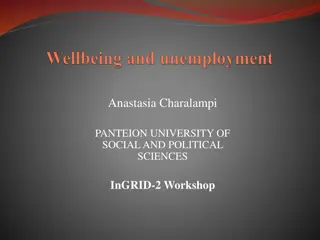Health, Safety, and Wellbeing Update November 2023
November 2023 update covers critical risk stats, safety topics on Drugs and Alcohol, sharing good practices, and WorkSafe updates. It emphasizes the importance of addressing fatigue, proactive site management, and the impact of alcohol and drugs on workplace safety. The report also highlights incidents related to critical risks, showcasing a decrease in reported incidents compared to previous months, particularly in Traffic/Pedestrian Movement.
Download Presentation

Please find below an Image/Link to download the presentation.
The content on the website is provided AS IS for your information and personal use only. It may not be sold, licensed, or shared on other websites without obtaining consent from the author.If you encounter any issues during the download, it is possible that the publisher has removed the file from their server.
You are allowed to download the files provided on this website for personal or commercial use, subject to the condition that they are used lawfully. All files are the property of their respective owners.
The content on the website is provided AS IS for your information and personal use only. It may not be sold, licensed, or shared on other websites without obtaining consent from the author.
E N D
Presentation Transcript
Health, Safety and Wellbeing Update November 2023
Contents 1. Sharing Something Goods 2. Critical Risk Stats 3. Safety topic of the month 4. Updated Critical Risks 5. New Life Saving Actions 6. Wellbeing 7. WorkSafe updates
Something Good We ve received several reports of sites proactively looking after their teams fatigue and well-being which is great to hear, keep it up! A team recently pressed pause on a job, where a water leak had possibly caused a slip, so it could get escalated and reassessed by an engineer. One of our team received a call from a customer who was very impressed with a P1 drinking water job which was described as a fountain outside her house and she was delighted at how quickly it was fixed If you have any cool stories to share, please send them to safe@wellingtonwater.co.nz
Critical Risk Stats - October Top Critical Risk Reports - October 2023 In October there were 59 reported critical risk related incidents, this is a decrease from September (49) and from October 2022 (80) 25 20 20 Traffic/Pedestrian Movement is our highest reported critical risk this month with 20 reports, followed by at Working with/near Services at 14 and Vehicles/Mobile Equipment at 12. 15 14 12 10 9 5 4 2 If you re interested in seeing other stats please let us know! 0 Confined spaces Hazardous Substance/Chemical Work at Vehicles/Mobile Equipment Working near/with services Traffic/Pedestrian Movement Height/Dropped Objects
Safety topic of the month Drugs and Alcohol
Topic of the month Drugs and Alcohol Alcohol and drug use can affect a person while they re impaired, and in the days following. Nursing a hangover, coming down from drugs, or simply being exhausted after a big weekend can impact a person s ability to concentrate, react quickly, and make good decisions at work and at home. This reduced performance can lead to mistakes that can cause serious injury impacting not only the person affected by alcohol and other drugs but their co-workers too
Topic of the month Drugs and Alcohol What about prescription drugs? Prescribed medication may have side effects, or if used incorrectly or mixed, it can impact your performance and compromise workplace safety. These risks can increase if workers: are in safety sensitive situations e.g. operating heavy machinery or driving haven t used the medication before are taking more than one type of medication drink alcohol with certain medications Always check with a GP about potential side effects of medication, and chat with your manager if there are any potential impacts on workplace safety. Drug use whether legal or illegal can cause significant harm.
Topic of the month Drugs and Alcohol The bravest thing you can do is ask for help Alcohol Drug Helpline 0800 787 797 or text 8681 M ori Alcohol Drug Helpline 0800 787 798 Pasifika Alcohol Drug Helpline 0800 787 799 Youth Alcohol Drug Helpline 0800 787 984 Raise EAP (Fulton Hogan) 0800 735 343, book online or download the Raise app. EAP Services (WWL) 0800 327 669, book online or download the EAP NOW app. https://thelevel.org.nz/
Drug and Alcohol Procedure Consultation We are carrying out our regular review and to ensure that our Drug and Alcohol Procedure is fit for purpose and that we are not being put at risk due to the presence of drugs and alcohol at work. In brief, the proposed changes are: Updated the language to be more inclusive (i.e., removal of words like clean) The procedure now talks about impairment and fitness for work We have updated the testing type with an increase in the use of oral-fluid testing (as this gives a better alignment to impairment): o Urine testing will only be used for post-incident testing where an oral- fluid test cannot be carried out within eight hours o Urine testing will continue to be used for pre-employment and internal transfer testing We are proposing to increase the frequency of random testing from 80 per year to the equivalent of 50% of the workforce per year (approximately double). Added third party requirement testing (i.e., workers will be required to undergo D&A testing where it is required for accessing a third-party site) Explicitly requires a member of the Health and Safety Team, or People and Capability Team to approve any reasonable cause testing It explicitly sets out how the rehabilitation process will work across our workforce including workers seconded to Wellington Water.
People first, every time Our effort is focused on ensuring everyone can come to work and return home safely. We will do this by tackling our critical risks head on. We also know how important our workers are we will look after the wellbeing of our Wellington Water Whanau We have updated our Critical Risks and developed some Life Saving Actions.
Critical Risks What is a Critical Risk? Critical Risks are those that can seriously hurt or even kill us or our work mates. They can be : Acute will kill you today Chronic will kill you next year, or next decade Catastrophic will kill you all We focus our effort ensuring the controls put in place for these risks are effective at keeping us safe.
Wellington Water s Updated Critical Risks
Life Saving Actions Why have Life Saving Actions? Our life saving actions have been developed to help keep you safe and to protect you from serious, and life threating, injuries. They are important because they help control some of the most significant risks our people face. They need to be followed by everyone, everywhere we work.
WorkSafe Updates An unsafe machine cost a worker his arm A worker was cleaning a conveyor belt when he went to pick up a dropped tool, his right arm was grabbed by the rollers which pulled him into the machine. A WorkSafe investigation found the conveyor s off switch was located in the next warehouse, and its emergency stop switch was completely disconnected and non-functional Although a business might have standard operating procedures for machinery while it s in use, it s critical to think about how that extends to cleaning and maintenance too Tragically, surgeons could not reattach his arm and he remains off work. Father of two loses his life after the van he was travelling in was struck by a runaway trailer A man was killed when a trailer detached from a vehicle and struck his van A WorkSafe investigation found the locking handle on the trailer was not engaged, and the trailer s safety chain was not connected to the vehicle. The businesses did not have systems to ensure vehicles were kept in good working order, or systems to ensure drivers visually checked their vehicles before use. WorkSafe also found staff had inadequate information, training, instruction, supervision, and experience to safely use the company vehicles and trailers
